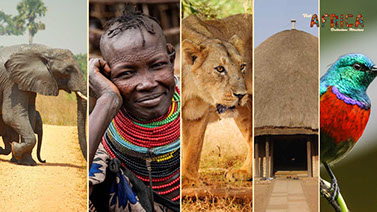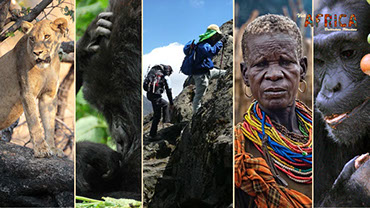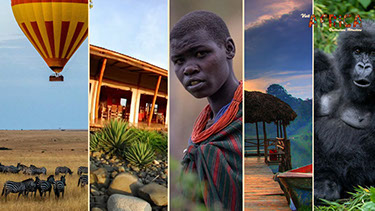The African Pangolin
Scientific Name:
- Phataginus tricuspis
- Smutsia gigantea
- Smutsia temminckii
- Uromanis tetradactyla
Weight:
From 1.5 to 33 kilograms, depending on the species
Size:
From 30 to 152 centimeters, depending on the species
Life span:
Estimated to 20 years in the wild
Diet:
Insectivorous
What is a Pangolin?
Pangolin are mammals of the order Pholidota. The one extant family, Manidae, has three genera: Manis, Phataginus and Smutsia. Phataginus and Smutsia each include two species living in Sub-Saharan Africa. Pangolin have large, protective keratin scales covering their skin; they are the only known mammals with this feature. They live in hollow trees or burrows, depending on the species. Pangolin are nocturnal, and their diet consists of mainly ants and termites, which they capture using their long tongues. The physical appearance of a pangolin is marked by large hardened overlapping plate-like scales, which are soft on newborn pangolin, but harden as the animal matures. They are made of keratin, the same material from which human fingernails and tetrapod claws are made, and are structurally and compositionally very different from the scales of reptiles. The pangolin's scaled body is comparable in appearance to a pine cone. It can curl up into a ball when threatened, with its overlapping scales acting as armour, while it protects its face by tucking it under its tail. The scales are sharp, providing extra defence from predators.
Pangolin can emit a noxious-smelling chemical from glands near the anus, similar to the spray of a skunk. They have short legs, with sharp claws which they use for burrowing into ant and termite mounds and for climbing
- The Giant Pangolin; is the largest species in the family of pangolin or scaly anteaters. Members of the species inhabit Africa with a range stretching along the equator from West Africa to Uganda. It subsists almost entirely on ants and termites.
- The Ground Pangolin, also known as The Cape Pangolin, is one of four species of pangolin which can be found in Africa and the only one in southern and eastern Africa. Although it is present over quite a large area, it is rare throughout it and notoriously difficult to spot. Its scarcity is partly because it is hunted by humans for its scales, which are used in love charms, and partly because it is often burnt in bush fires.
- Tree or African White-bellied Pangolin; is the most common of the African forest pangolin. The Tree Pangolin ranges from Guinea through Sierra Leone and much of West Africa to Central Africa as far east as extreme south-western Kenya and north-western Tanzania. To the south it extends to northern Angola and north-western Zambia. The Tree Pangolin can walk on all fours or on its hind legs using its prehensile tail for balance. It can climb up trees in the absence of branches. It has a well-developed sense of smell, but, as a nocturnal animal, it has poor eyesight. Instead of teeth it has a gizzard-like stomach full of stones and sand it ingests. The Tree Pangolin in Africa fills its stomach with air before entering water to aid in buoyancy for well-developed swimming.
- Long-tailed Pangolin, also called the Black-bellied Pangolin; is an arboreal pangolin native to the sub-Saharan forests of Africa. Its common name is derived from its especially long tail (average 60 cm, or 24 inches). In spite of the long tail, this species is the smallest pangolin. This species occurs in the forested regions of West and Central Africa, from Sierra Leone eastwards through south-eastern Guinea, Liberia, Côte d’Ivoire and south-west Ghana, there being an apparent gap in distribution until west Nigeria. They then occur eastwards through southern Cameroon, and much of the Congo Basin forest block to the Semliki valley in Uganda.
.jpg?crc=354308795)
Where do Pangolin Live?
The Pangolin inhabits many countries across the African Continent, with the largest concentration in East-Africa (Uganda, Tanzania, and western Kenya), West Africa (Guinea, Liberia, Côte d’Ivoire, Ghana, Nigeria, and neighbouring countries) and Southern Africa (South-Africa, Namibia, Zimbabwe, Zambia and other neighbouring countries). It is found mainly in the Savannah, rainforest, and forest, inhabiting areas with large termite populations and available water. Pangolin does not inhabit high-altitude areas. The Pangolin is threatened by habitat destruction and deforestation, and hunting for the bush meat trade.
.jpg?crc=4113541144)
What are the Behaviours of Pangolin?
Pangolin are insectivorous. Most of their diet consists of various species of ants and termites and may be supplemented by other insects, especially larvae. They are somewhat particular and tend to consume only one or two species of insects, even when many species are available to them. A pangolin can consume 140 to 200 grams (5 to 7 ounces) of insects per day. Pangolin are an important regulator of termite populations in their natural habitats.
Most pangolin are nocturnal animals which use their well-developed sense of smell to find insects. The long-tailed pangolin is also active by day, while other species of pangolin spend most of the daytime sleeping, curled up into a ball.
Pangolin have very poor vision, so they rely heavily on smell and hearing. Pangolin also lack teeth; therefore they have evolved other physical characteristics to help them eat ants and termites. Their skeletal structure is sturdy and they have strong front legs that are useful for tearing into termite mounds. They use their powerful front claws to dig into trees, ground, and vegetation to find prey, then proceed to use their long tongues to probe inside the insect tunnels and to retrieve their prey.
Some pangolin walk with their front claws bent under the foot pad, although they use the entire foot pad on their rear limbs. The Pangolin are also good swimmers.
The structure of their tongue and stomach is key to aiding pangolin in obtaining and digesting insects. Their saliva is sticky, causing ants and termites to stick to their long tongues when they are hunting through insect tunnels. Without teeth, pangolin also lack the ability to chew; however, while foraging, they ingest small stones (gastroliths) which accumulate in their stomachs to help to grind up ants. This part of their stomach is called the gizzard, and it is also covered in keratinous spines. These spines further aid in the grinding up and digestion of the pangolin's prey.
.jpg?crc=112587801)
What do Pangolin eat?
Pangolin are a specialized insectivore that lacks teeth and the ability to chew. Its diet mainly consists of ants and termites, which it finds by tearing open anthills and termite nests, both subterranean and mound-type.
.jpg?crc=254289637)
10 Interesting Facts about Pangolin
- The name Pangolin is derived from the Malay word ‘pengguling’, which means ‘rolling up’. This is reference to the animal’s defence mechanism of rolling up into a tight little hardened ball when they are under threat.
- Pangolin have a long sticky tongue that grows from deep inside their chest cavity and can extend to over 40cm, which is longer than its own body! This tongue is a perfect tool for catching insects.
- They are nocturnal, solitary animals with very poor eyesight. Their sense of smell and sound is supreme and is used to hunt out termite mounds and ant hills.
- Pangolin’ scales are made of keratin, the same protein that makes up our own hair and nails, rhino horns, the “teeth” of baleen whales, and the claws of bears (and other clawed animals). Their scales cover the entire body from head to tip of tail except for their undersides, which are covered with a few sparse hairs.
- Special glands near the animal’s anus secrete a pungently odorous fluid that is used for marking its territory. Like many other animals, they also scent mark with their faeces and urine.
- When the pangolin’s tongue is fully extended, it can be up to 16 inches (over 40 centimetres) longer than its entire body length! In fact in most species, their tongues actually start deep in their chest cavity, arising from the last pair of ribs, and are about a quarter inch (0.6 cm) thick. Additionally, their sticky saliva coats their tongues to help the bugs.
- Pangolin can voluntarily constrict their ears and nostrils to keep insects out while they are feeding.
- It is believed that a single pangolin consumes more than 70 million insects per year. They mainly eat ants and termites.
- Giant ground pangolin are the largest of all eight species. One was found to weigh 33 kilograms (72.6 pounds) the largest pangolin ever recorded! Long-tailed pangolin are the smallest, weighing around 2-3 kg (about 4-6 pounds).
- The biggest threat to all pangolin species today is illegal, commercial hunting for human consumption. African species are largely hunted as bush-meat, but there also seems to be some regional use of their scales and other body parts in folk medicines and cultural traditions and rituals.
.jpg?crc=4236205246)
Architect Tourism SMC Ltd is an African tourism company, crafted to inspire and enable a breathtaking beautiful experience of Africa. Visit Africa is one of Architect Tourism SMC tourism brands. Visit Africa is inspired to craft innovative, fun and breathtaking tourism events, trips, excursions, getaways, safari, vacations, holiday, and tours experiences.
Vision: To inspire, craft, and enable a breathtaking beautiful experience of Africa.
Our Values: African, Oneness, Integrity, Client focused, Conservation focused, Innovative, Excellence, Simplicity.
Company Registration Number: 80020002986484 | Company Tax ID: 1018106912

Visit Africa is an African tourism brand, that profiles every tourist destination, in every country, in Africa; Destinations, How to get there, Attractions, Things to do, How to get around, itinerary pricing and Where to stay, for an adventurous breathtaking and thrilling experience of tourism of Africa.
Visit Africa
Destinations
Visit Namibia
We are Social!
Search this website!
Africa
Visit Africa
Visit Uganda
Visit Tanzania
Visit Zimbabwe
Visit South Africa
Visit Kenya
Visit Morocco
Tour Itineraries











Visit Africa Copyright © 2019 - Visit Africa is a Tourism Brand of Architect Tourism SMC Limited.
Wildlife in Africa
Visit Egypt

Visit Rwanda
Visit Africa's Tourism Events

Uganda Wildlife, Nature, City life & Cultural Tourism Event Experience
8 days | 3 Major Destinations | 6-25 Travellers
From $1,800





